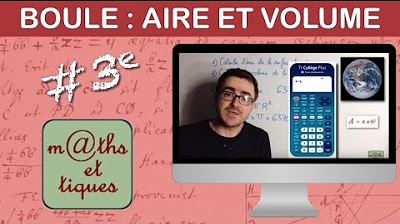Structure of the Earth: Crust, Mantle and Core
Summary
TLDRThe Earth, with a diameter exceeding 12,000 kilometers, has an interior structure that remains largely unexplored beyond 15 kilometers deep. Scientists have developed a model of its interior based on indirect observations like earthquake studies. The Earth's outermost solid rock layer, the crust, is very thin, ranging from 10 to 70 kilometers deep. Beneath it lies the mantle, which constitutes 80% of Earth's volume and transitions from rigid to partially molten rock at greater depths, reaching temperatures of 3,000 degrees Celsius. At the heart of the planet is the core, an extremely dense, metal-rich region with temperatures exceeding 6,000 degrees Celsius. This core generates heat that rises towards the surface, warming the crust.
Takeaways
- 🌍 Earth's diameter exceeds 12,000 kilometers, yet our understanding of its interior is limited to its outer layer.
- 🔩 Drilling has never reached more than 15 kilometers into the Earth's crust, which is the outermost solid rock layer.
- 📏 The Earth's crust is relatively thin, ranging in depth from 10 to 70 kilometers.
- 🌐 The crust is underlain by the mantle, which constitutes 80% of the Earth's volume and has a rigid upper part.
- 🔥 Below the rigid upper mantle, the rock becomes partially molten at temperatures reaching up to 3,000 degrees Celsius.
- 💥 The Earth's core, composed mainly of metals, is extremely dense with temperatures exceeding 6,000 degrees Celsius.
- 🌡️ Heat from the core is partly carried to the surface by the slow movement of molten materials, warming the Earth's crust.
- 🌏 Scientists have developed a model of the Earth's interior based on indirect observations such as the study of earthquakes.
- 🌋 Earthquakes provide valuable data that help scientists understand the structure and dynamics of the Earth's interior.
- 🎶 The script is accompanied by music, suggesting a multimedia presentation that might include visual elements to complement the information provided.
Q & A
What is the diameter of Earth?
-Earth measures more than 12,000 kilometers in diameter.
How deep can we directly observe within the Earth?
-Our direct knowledge extends only to its outer layer, and no drilling has penetrated more than 15 kilometers into the ground.
What is the outer layer of Earth called?
-The outer layer of Earth, composed of solid rock, is called the crust.
How thick is the Earth's crust in comparison to the planet as a whole?
-The crust is very thin on the scale of Earth as a whole, with a depth of 10 to 70 kilometers.
What layer of Earth is the crust sitting on?
-The crust sits on the mantle, which takes up 80% of the planet's volume.
How is the mantle different at varying depths?
-The upper part of the mantle is rigid, while at greater depths, the rock is partially melted.
What are the temperatures like in the deeper parts of the mantle?
-The temperatures in the deeper parts of the mantle can be as high as 3,000 degrees Celsius.
What is the center of Earth called and what is its composition?
-The center of Earth is called the core, and it is an extremely dense area composed mainly of metals.
What is the temperature in Earth's core?
-The temperature in Earth's core is above 6,000 degrees Celsius.
How does the heat from the core affect the Earth's crust?
-Part of the heat from the core is carried by the slow movement of molten matter, which rises toward the surface and warms Earth's crust.
What methods have scientists used to establish a model of Earth's interior?
-Scientists have used methods such as the study of earthquakes to establish a model of the interior of the planet.
Outlines

This section is available to paid users only. Please upgrade to access this part.
Upgrade NowMindmap

This section is available to paid users only. Please upgrade to access this part.
Upgrade NowKeywords

This section is available to paid users only. Please upgrade to access this part.
Upgrade NowHighlights

This section is available to paid users only. Please upgrade to access this part.
Upgrade NowTranscripts

This section is available to paid users only. Please upgrade to access this part.
Upgrade NowBrowse More Related Video

Structure of the Earth Crust, Mantle and Core | Struktur Kerak Bumi, Mantel dan Inti Bumi

When Will We Finally Lose Contact With Voyager?

Calculer l'aire et le volume d'une boule - Troisième

Climate change forces indigenous Alaskans to relocate

Neutron Stars – The Most Extreme Things that are not Black Holes

Air Adalah Kehidupan, Seberapa Besarkah Cadangan Air Tanah Kita?
5.0 / 5 (0 votes)